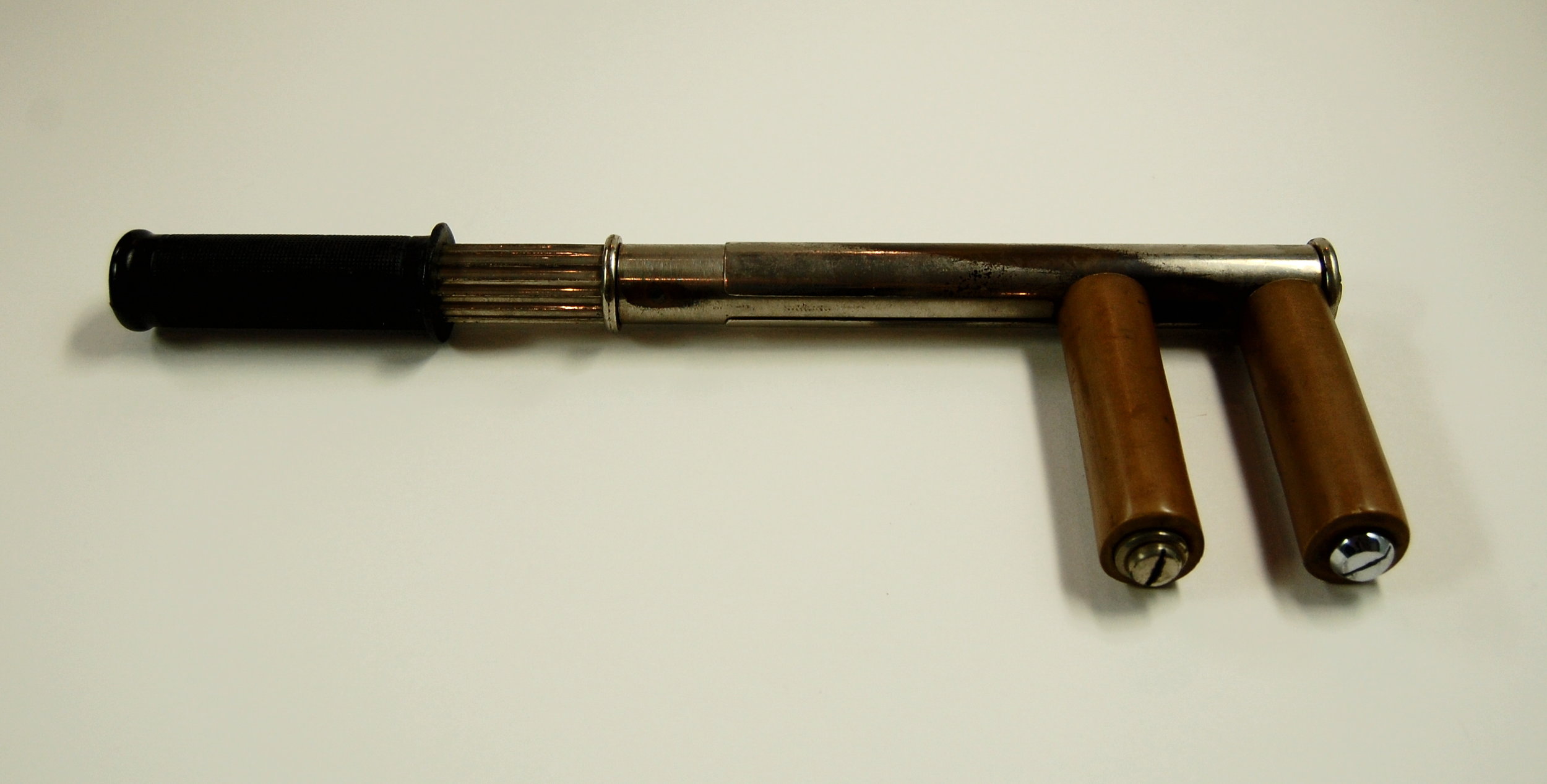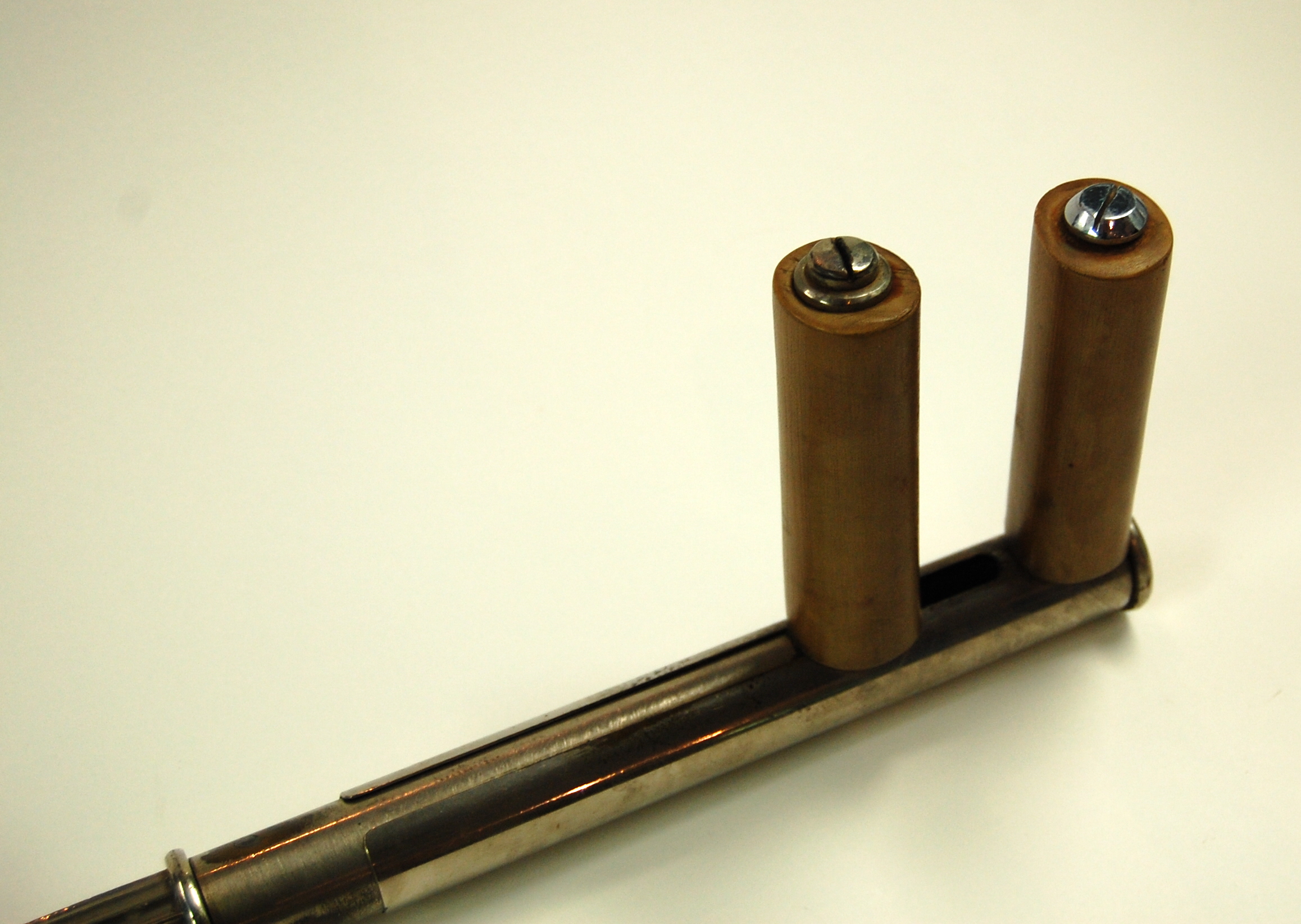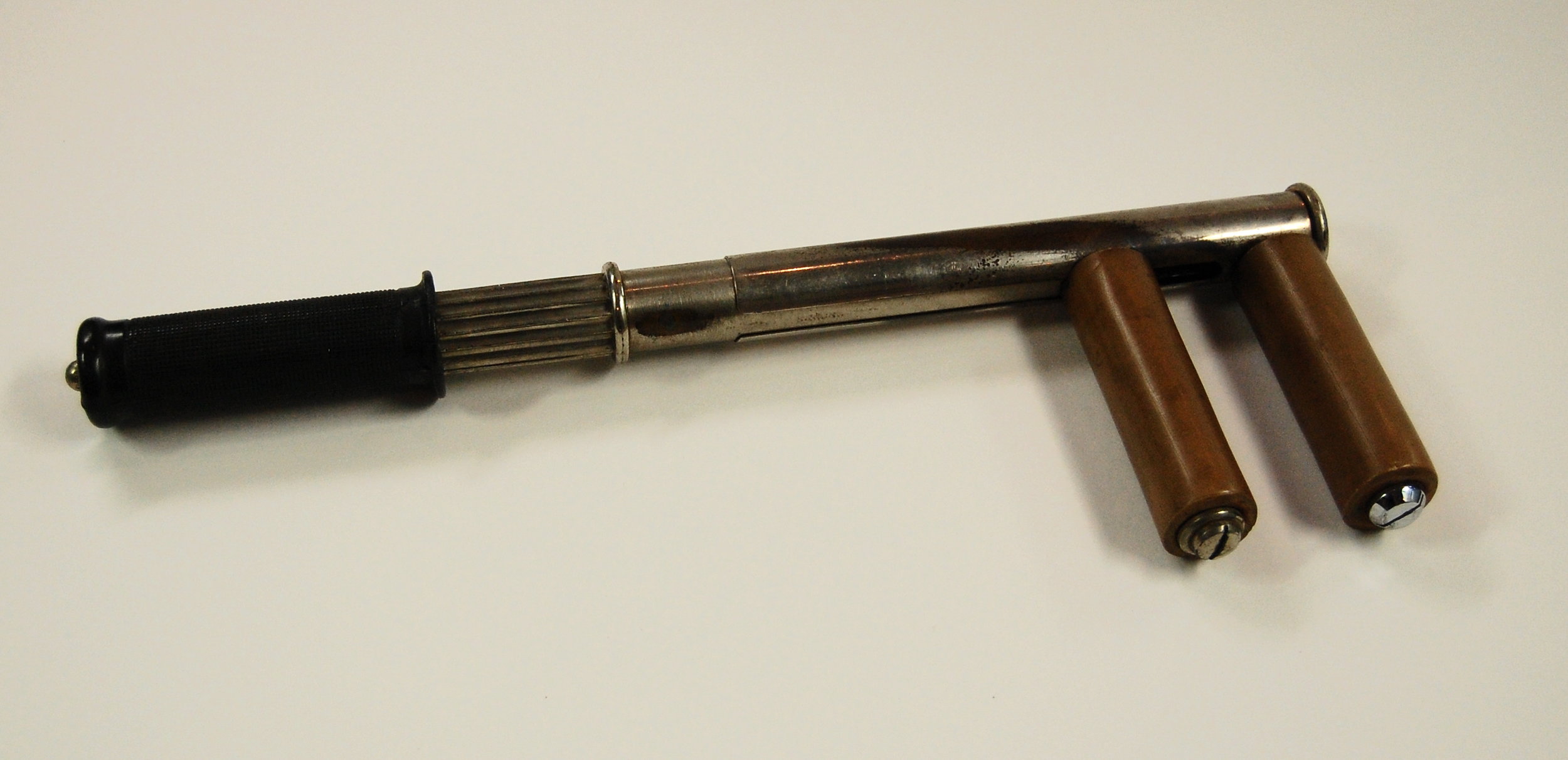





This Thomas Wrench was used to correct clubfeet and fractures. Now considered a particularly harsh method of treatment, the foot would be rolled between the two shorter cylinders to forcibly correct it.
Hugh Owen Thomas (1834-1891) was a welsh orthopaedic surgeon who is considered to be the father of orthopaedic surgery in Britain. Thomas was inspired by his families well established work and interest in bone-setting. In addition to the Thomas wrench, he also created the ‘Thomas splint’ to stabilise a fractured femur and the ‘Thomas test’ as a way of detecting hip flexion contracture.
Correspondence printed in the Journal of the American Medical Association, April 1929 between H.B. Thomas M.D. and John Ridlon, M.D. discusses the Thomas wrench. H. B. Thomas claims that,
‘Such a wrench should be owned by every surgeon whose practice includes fractures and deformities’.
In response John Ridlon, M.D. stated that whilst observing Hugh Owen Thomas ‘in 1887 (or 1888)’ using the Thomas wrench on a patient with congenital clubfoot, Thomas claims that he ‘modified this myself from a wrench I found in a hardware shop; but I have searched England and cannot find another.’
This object is on display in the Orthopaedics display case at the George Marshall Medical Museum.